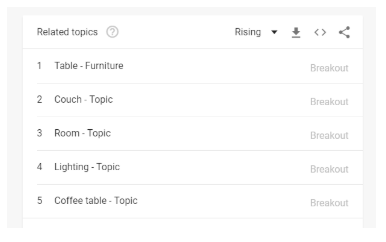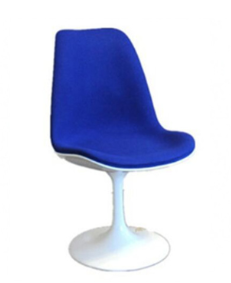
We’ve talked a lot about dropshipping lately, a flexible business model that allows merchants to sell products on their own website without pre-ordering, storing or shipping them. Instead, your dropshipper — usually the product manufacturer or a fulfillment house — ships each product on demand directly to the customer, as it’s ordered. The reason this model is so great is because it allows anyone to start an ecommerce business with minimal startup capital, and it frees up time to focus on the business, website and marketing.
However, that’s also the reason it’s absolutely critical to have your organic ducks in a row when you’re running a dropshipping-based ecommerce site. You’ll likely be competing against a lot of sites that sell the same products, so to earn high-quality, conversion-ready search traffic, your SEO strategy will have to be even more, well, strategic than usual. But it can be done! To learn how, let’s run a thought experiment and create our own dropshipping store from the ground up, so that we can build SEO considerations in at each step.
Choosing an SEO-Friendly Idea
Welcome to square one! This is the “I want to start a dropshipping ecommerce store and I have no idea what to sell” phase of the process. We have a lot of great guides on our blog that will give you more detailed information about what to sell online, so if you’re really stuck, start there. As you begin your research and dig into information like this, you’ll probably read a lot of advice that tells you to look at what’s trending, be it on Amazon, Etsy or Google. That’s a good approach and it’s an especially great way to spark ideas, but when I’m thinking like an SEO specialist, I’m less interested in short-term market trends and more interested in products that show slow, sustained growth over time. That will allow us to build a sustainable organic strategy in turn.
If you’ve used AliExpress to find a specific item to dropship, there’s a good chance that hundreds or thousands of other people have too.
For the purposes of this blog post, AliExpress is going to be a good place for us to look for products because it’s one of the epicenters of cheap, replicable goods that will be identical to what everybody else is selling. In other words, if you’ve used AliExpress to find a specific item to dropship, there’s a good chance that hundreds or thousands of other people have too. That’s usually not great, but it’s a perfect way to illustrate how we can set ourselves apart with our organic strategy. So for our store today, I’m liking the idea of furniture, and after playing around with different furniture-based searches on Google Trends, I’m feeling good about what the search “mid century modern” looks like:

This is a style of interior and architectural design that has been steadily on the rise since the earliest point of the search parameters that I set, 2004. And further, Google has identified the following related topics as breakout trends, which will give us some categories to start taking a look at:

If I search for “mid century modern furniture” on AliExpress I get plenty of results, so let’s run with it!
From Product To Niche
Mid-century modern furniture is a great start, but is it enough of a niche to allow you to carve out some organic space? If you sold truly unique or hard-to-find items, it just might be. For our store, though, we’re going to need to think a little harder. We’re not selling products people can’t get anywhere else, so why might people come to our shop? How might they stumble across us organically in the first place? Because they trust us as curators. People don’t have time to dig around the internet scouring for the best of the best, so they’re coming to niche ecommerce shops with the expectation that the merchant has developed some expertise in the subject and performed the legwork for them.
I’m going to think about the qualities that I like in the furniture I picked to see if there’s another way in which we can tunnel into a niche without narrowing our product options.
Sdo we need a stronger niche, but that doesn’t necessarily mean we have to get more specific by dialing into a certain category, like selling nothing but mid-century modern coffee tables. Although we could! We could make a name for ourselves as coffee table experts and run a successful little shop. I’d personally get a little bored with that, and we’d also find it difficult to upsell our customers or get repeat buyers, because how many coffee tables do people really need? So, I’m going to think about the qualities that I like in the furniture I picked to see if there’s another way in which we can tunnel into a niche without narrowing our product options. What I’m realizing is that within the mid-century modern category, I’m most drawn to the products with a weird, retro-futuristic vibe, like this chair:

I’ve always loved historical interpretations of the future, because there’s an imaginative, futuristic flair that’s still deeply influenced by the trends of the time. And organically, that’s perfect! Retrofuturism is something we can really sink our teeth into, curating a range of odd, sleek, Jetsons-inspired products that don’t have to stay limited to the furniture category. Instead, since this is more about the aesthetic, we can think about other pieces to sell that would complete the collection: lighting, prints, kitchen items, and artwork. And since a lot of mid-century modern furniture has this distinct flair, we can feel comfortable knowing that the information we discovered in our trend research still, to an extent, umbrellas over this niche.
Above All Else, Be Unique
Now that we’re primed for SEO-friendliness with a niche target audience, here’s where the real legwork comes in. Our products may not be unique, but we can make it a lot harder for people to figure that out by making everything else we can unique:
- Unique Keywords - Let’s make note of the keyword searches we used to find our products. With that blue chair, the search was “mid-century modern furniture.” So I’m going to want to target a different search term for that product page (along with, ideally, 2-4 other search terms), because even if I can pull in traffic for “mid century modern chair,” as soon as my customers start to comparatively shop and hit AliExpress or another dropshipping site, the jig is up. However, “retrofuturistic blue chair” is an example of a keyword I could target for that page (note: without looking at the search volume and keyword difficulty I’m not sure if this is even a keyword I’d want to target, but for this thought experiment, let’s say it’s a good one). If someone searches for that term, my chair will satisfy their needs, and if they take a look around at the internet landscape first for other products retrofuturistic blue chairs, they’re going to have a harder time running into duplicates of that specific chair.
There’s a plethora of reasons why you should run test orders on every product you’re planning on dropshipping, and a major one is that you’ll have the ability to arrange your products in a way that suits your brand and photograph them.
-
Unique Photos - While I’m performing my keyword research and developing my list of optimal keywords across the site, I’m also waiting for the mail to come. I have a whole bunch of Jetsons-themed furniture heading my way! There’s a plethora of reasons why you should run test orders on every product you’re planning on dropshipping, and a major one is that you’ll have the ability to arrange your products in a way that suits your brand and photograph them. Not only will you have greater control over creating the lifestyle you’re trying to convey with your brand, but you’ll also end up with unique, beautiful images that can’t be reverse-image-searched.
-
Unique Product Descriptions - This is one of the most important organic considerations when you’re running a dropshipping store. The absolute worst thing you can do is simple copy and paste the manufacturer’s description. There’s no chance you’ll outrank the original site, and at worst, you’ll lose Google’s trust completely. Just a step up from that is rewriting the description so that it’s technically unique, but describes the product in the exact same way.
This sort of product description isn’t just about organic friendliness; it’s also about connecting deeply to the customer.
Instead, you want to think about your audience and rewrite the description with them in mind. So in our case, we’re targeting people who love retrofuturism, here! Where does that chair belong? On the U.S.S. Enterprise? In a groovy future dining room with a robot butler? Or would it just be the perfect pop of color in the customer’s quirky but minimalist dining room? This sort of product description isn’t just about organic friendliness; it’s also about connecting deeply to the customer and offering them a product that integrates with their own personal brand.
None of this is about tricking people into buying an AliExpress chair by using smoke and mirrors to hide where it came from. It’s about creating real value for our customers by helping them see how this piece of furniture fits into their life and what items they can purchase with it to create an atmosphere that makes them feel happy, quirky, energetic and confident.
Become The Expert
Even after our meta data and product descriptions are SEO-friendly, our content work has just begun. Remember, we want to be the go-to experts on retrofuturism. That means we’re going to build out a blog full of fun retrofuturism-themed information, including history, quirky facts, behind-the-scenes looks at old sci fi shows, and more. With time and consistency, these posts will connect to organic searches from other fans of the era, who may not have even realized they need a blue chair in their life until they discover our site via an unrelated search.
Above all, have fun! So maybe you’re not a fan of retrofuturism, but it’s a good example of something I enjoyed enough to complete that exercise. The key to a successful dropshipping store is great marketing, which is a whole lot easier to pull off when you actually feel a connection to the products you’re selling and the audience you’re targeting. So find the thing that excites you and run with it. Good luck!
Have any questions about SEO for dropshipping? Ask them in the comments!











